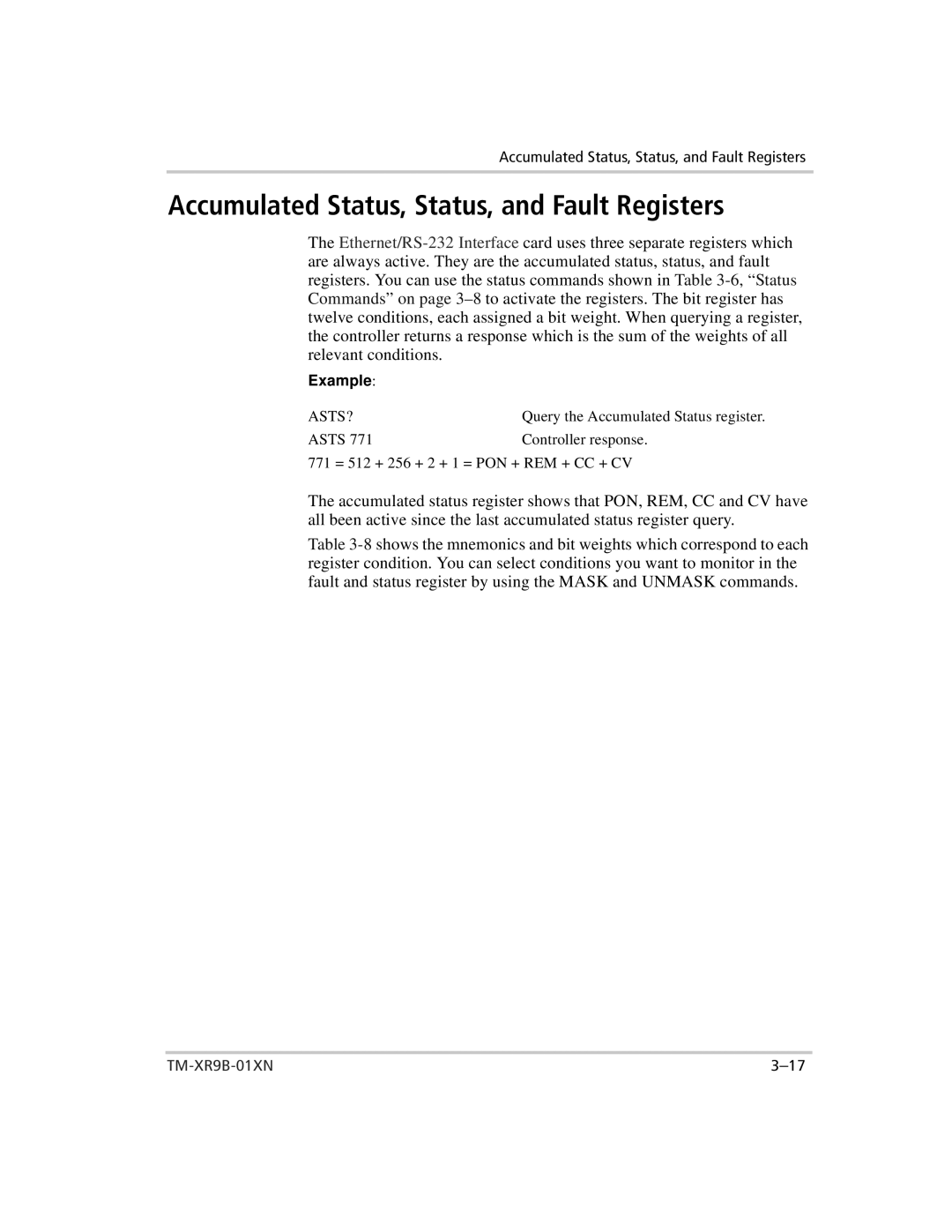Accumulated Status, Status, and Fault Registers
Accumulated Status, Status, and Fault Registers
The Ethernet/RS-232 Interface card uses three separate registers which are always active. They are the accumulated status, status, and fault registers. You can use the status commands shown in Table 3-6, “Status Commands” on page 3–8to activate the registers. The bit register has twelve conditions, each assigned a bit weight. When querying a register, the controller returns a response which is the sum of the weights of all relevant conditions.
Example: | |
ASTS? | Query the Accumulated Status register. |
ASTS 771 | Controller response. |
771 = 512 + 256 + 2 + 1 = PON + REM + CC + CV
The accumulated status register shows that PON, REM, CC and CV have all been active since the last accumulated status register query.
Table 3-8shows the mnemonics and bit weights which correspond to each register condition. You can select conditions you want to monitor in the fault and status register by using the MASK and UNMASK commands.

